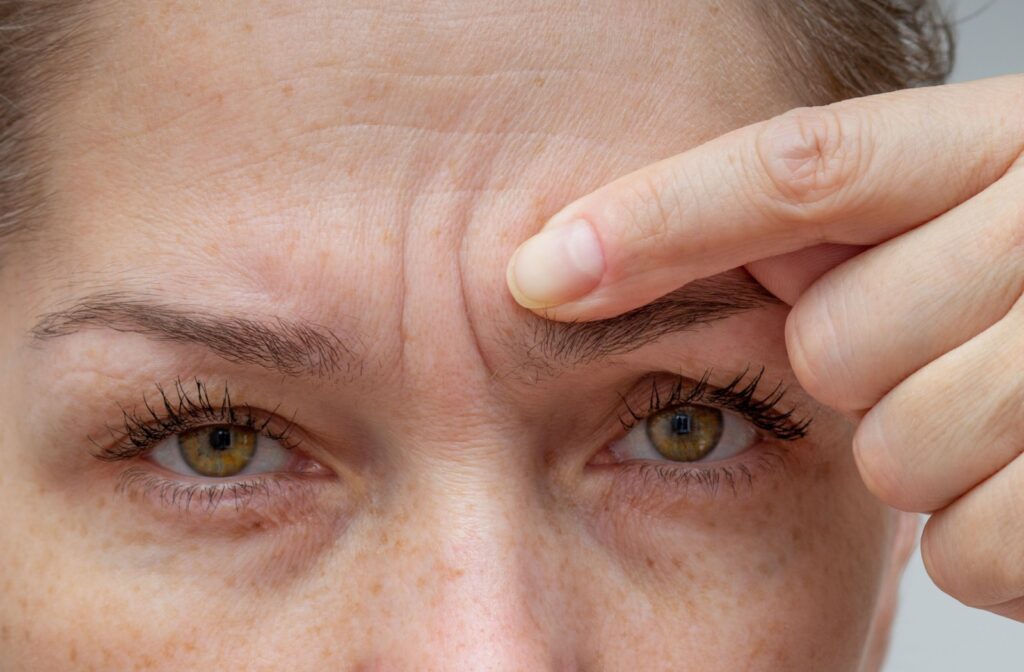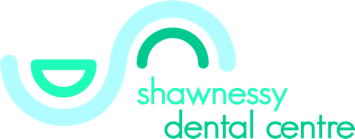Forehead wrinkles may be a cause of concern for many people, but Botox injections can help reduce these wrinkles. Depending on your personal goals and the severity of your wrinkles, your practitioner may recommend 20–30 units of Botox to reduce frown lines and 10–30 units to reduce horizontal forehead lines.
You should always work with a qualified practitioner to find a suitable number of units that will work for you.
What Causes Wrinkles?
Wrinkles are the result of multiple factors over time, including:
- Aging: As you age, your skin produces less collagen and elastin, 2 proteins responsible for keeping your skin firm and smooth. As your skin loses moisture and begins to thin, it becomes more prone to wrinkles.
- Sun exposure: Ultraviolet (UV) rays from the sun break down collagen and elastin in the skin, accelerating the appearance of wrinkles. Excessive UV exposure can cause some people to develop wrinkles earlier than others.
- Repetitive facial movements: Expressions like frowning, raising your eyebrows, or squinting can contribute to developing wrinkles. The repeated contraction of facial muscles can create fine lines over time, particularly on the forehead, around the eyes, and between the eyebrows.
- Your overall lifestyle: Smoking, poor hydration, and even genetics can also contribute to how quickly and easily you develop wrinkles.
What Is Botox?
Botox is a wrinkle treatment approved by Health Canada for adults younger than 65. It is an injectable cosmetic treatment that temporarily relaxes the muscles underneath the skin.
When injected into targeted areas, it prevents the muscle contractions that cause dynamic wrinkles. Once these muscles are relaxed, the skin above them becomes smoother, helping reduce the appearance of fine lines and wrinkles.
Benefits
Botox can be used in both medical and cosmetic procedures. Botox is:
- Non-surgical and minimally invasive: It’s ideal for people who want noticeable results without committing to a surgical procedure.
- Quick and effective: The treatment typically takes 10–15 minutes, and results can show within 24–48 hours.
- Customizable: Botox treatments can be tailored to suit your preference, whether you want subtle or more prominent results.
By keeping certain muscles relaxed, you can also prevent deep lines and future wrinkles from forming.
Where Is Botox Used on the Face?
Botox is a versatile treatment that targets dynamic wrinkles caused by muscle movement. It can be used on horizontal forehead lines, glabellar lines (the area above the nose and between the eyebrows), and crow’s feet around the eyes.
Unit Guide for Facial Areas
While the exact number of units will vary, there are general guidelines for the most commonly treated areas:
- Horizontal forehead lines will typically need 15–30 units of Botox.
- Glabellar lines (frown lines) typically require 20–30 units, with some cases needing up to 40 units.
- Crow’s feet will typically need 5–15 units per side.
It’s important to consult with your practitioner and discuss your goals. Although Botox is safe, qualified practitioners still have to be careful. Too much Botox can cause excessive muscle relaxation, potentially resulting in drooping eyelids or uneven eyebrows.
Your practitioner can work with you to determine the appropriate amount needed to achieve your goals.
What Factors Influence the Number of Botox Units?
- Age: Younger patients with finer lines may require fewer units, while older adults with deeper wrinkles might need more to achieve their desired results.
- Skin type: Thicker skin often requires more units, while thinner skin may need less to achieve a similar result.
- Muscle strength: Facial muscles that are particularly strong or overactive might need a higher dose of Botox.
- Treatment history: Patients who receive regular Botox treatments might need fewer units over time, as their muscles can become progressively less active.
- Desired outcomes: The number of units used also depends on whether you want slight movement in your facial muscles or complete relaxation.
What to Expect During a Botox Treatment
Here’s a rundown of what you can expect during a Botox treatment:
- Initial consultation: You’ll discuss your goals and concerns with your provider, and they’ll assess your facial anatomy and recommend a treatment plan tailored to you. Make sure you share your medical history or recent skin treatments.
- Preparation: The treatment area will be cleansed, and your provider may apply a numbing cream to minimize discomfort.
- Injection: Your provider will inject small amounts of Botox into the targeted muscles. You may feel a small pinch or prick even with the numbing cream.
- Post-treatment care: After the procedure, you can resume most of your daily activities immediately. However, you should avoid lying down, vigorous exercise, and rubbing the injection sites for at least 4–6 hours.
If you’re considering Botox, contact your practitioner directly to learn more about what to expect and determine whether Botox is right for you.
Less Wrinkles, Lasting Results
Botox can quickly and effectively reduce fine lines and wrinkles, and the results can last for months. If you’re looking to retain smooth skin, Botox is approved by Health Canada to treat and reduce moderate to severe forehead lines, frown lines, and crow’s feet.
Book your consultation with our team at Shawnessy Dental Centre today to see how Botox can help you achieve your skin goals.


